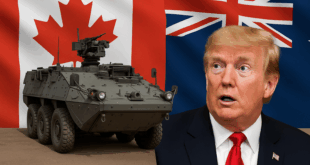Trump’s Tariff War Against China and the Expansion of Tariff Policies: Implications for Pakistan.
Former U.S. President Donald Trump’s tariff war against China marked a significant shift in global trade policies, disrupting supply chains and reshaping economic alliances.
Initially aimed at reducing the U.S. trade deficit and curbing China’s economic rise, Trump’s aggressive tariff policies extended beyond China, affecting multiple countries.
With Trump hinting at a return to office, his renewed tariff strategies could have significant consequences for global trade, including for Pakistan.
Past: Trump’s Trade War with China
The U.S.-China trade war officially began in 2018 when Trump imposed tariffs on $50 billion worth of Chinese goods, citing unfair trade practices and intellectual property theft. China retaliated with its own tariffs on American products.
Over time, this escalated into a full-scale economic confrontation, with the U.S. imposing tariffs on over $360 billion worth of Chinese imports.
Key impacts of this trade war included:-
Global Economic Disruptions: Supply chain instability affected global markets.-
Manufacturing Shifts:
Many companies sought alternative manufacturing bases outside China.-
Pakistan’s Limited Involvement:
While Pakistan did not directly engage in this tariff war, shifts in global trade patterns did impact its economy, particularly in terms of supply chains and foreign investment trends.
Present: Expansion of Trump’s Tariff Policy to Other Countries
While Trump’s presidency ended in 2021, his tariff policies left a lasting impact.
The Biden administration maintained many of these tariffs, with only minor modifications.
However, Trump has indicated that, if re-elected, he would expand his tariff war to other countries, not just China.
Reports suggest he may impose universal tariffs, including a 10% across-the-board tariff on all U.S. imports and possibly 60% tariffs on Chinese goods.Potential targets include:-
European Union (EU) & Mexico: For trade imbalances and auto industry disputes.-
India: Due to intellectual property concerns and market access issues.-
Pakistan: While not a direct target, Pakistan’s trade routes, particularly under CPEC (China-Pakistan Economic Corridor), could be affected due to broader economic disruptions.
Future Possibilities: Impact on Pakistan
1. Trade and Export Challenges
If Trump’s new tariff policies materialize, they could affect Pakistan’s trade in several ways:-
Textile Industry:
Pakistan’s textile exports rely heavily on global trade stability. If U.S. tariffs create market uncertainty, Pakistan’s textile industry could face lower demand.-
China-Pakistan Relations:
Any economic setback for China due to U.S. tariffs could indirectly impact Pakistan, especially CPEC projects.-
Export Diversification:
If global trade shifts away from China, Pakistan might need to explore new markets to avoid over-reliance on Chinese supply chains.
2. U.S.-Pakistan Relations
Pakistan has historically maintained a complex relationship with the U.S. Trump’s presidency saw a mix of economic cooperation and diplomatic tension. If re-elected, Trump might:-
Impose Tariffs on Pakistani Goods:
Although Pakistan is not a major trade partner for the U.S., stricter tariff policies could affect exports.-
Limit Trade Preferences:
Programs like GSP (Generalized System of Preferences) could be restricted, affecting Pakistan’s export potential.-
Pressure Pakistan Over China Ties:
A renewed trade war with China could push the U.S. to demand that Pakistan reduce its economic reliance on Beijing.
3. Investment and Economic Growth-
Foreign Direct Investment (FDI)
Increased U.S.-China trade tensions could lead to a shift in global investment patterns. Pakistan might benefit if companies relocate from China, but only if it improves infrastructure and investment policies.-
Currency and Inflation Risks:
Global economic instability could lead to currency devaluation and inflation, impacting Pakistan’s economic stability.-
CPEC and BRI Uncertainty:
A tougher stance on China could slow down projects under the Belt and Road Initiative, affecting Pakistan’s long-term economic growth.—
Trump’s trade war with China was a defining feature of his presidency, and his possible return could mean an even more aggressive approach to tariffs.
For Pakistan, this presents both challenges and opportunities. While disruptions in global trade could impact exports and investment, Pakistan could also position itself strategically to benefit from shifts in global supply chains.
The key for Pakistan will be to strengthen its trade policies, diversify its export markets, and navigate its diplomatic ties carefully amid the evolving economic landscape.
 Top Trends Blogs Trending Blogs – Latest News
Top Trends Blogs Trending Blogs – Latest News

